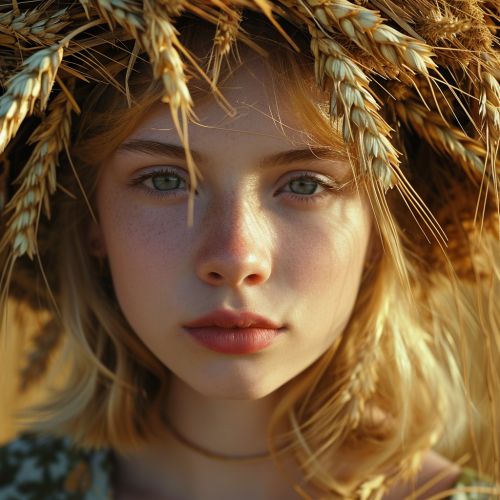Lada (mythology)
Origins
The term "Lada" originates from the Slavic pantheon, where she is revered as a goddess of beauty, love, and fertility. The etymology of her name is believed to be derived from the Old Slavic word "lad", which translates to "beautiful" or "loved". Lada is often depicted as a young woman with golden hair and a wreath of wheat spikes, symbolizing her connection to the earth and its fertility.


Cultural Significance
In Slavic mythology, Lada is considered the mother of all gods and goddesses, and she is often associated with the spring and summer seasons when the earth is most fertile. She is the patroness of marriage and childbirth, and her blessings are invoked for love and happiness in the family. Lada is also associated with harmony, concord, and mutual understanding, and she was often invoked to end disputes and bring about peace.
Worship and Rituals
The worship of Lada was widespread among the Slavic peoples. She was revered not only as a goddess of love and fertility but also as a protector of the people. Her worship involved various rituals, including the making of offerings and the singing of hymns in her honor. The most common offerings to Lada were bread, salt, and cheese, which were seen as symbols of hospitality and friendship.
Lada in Folklore
Lada is a prominent figure in Slavic folklore, often appearing in folk songs, tales, and proverbs. She is typically portrayed as a kind and benevolent figure who brings happiness and prosperity to those who honor her. In some tales, Lada is depicted as a beautiful maiden who is pursued by the sun god, Dazhbog, but she rejects his advances and chooses to remain independent. This story is often interpreted as a metaphor for the changing seasons, with Lada representing the fertile earth and Dazhbog representing the life-giving sun.
Modern Interpretations
In modern times, Lada continues to be a popular figure in Slavic culture. She is often invoked in folk songs and dances, and her image is used in various forms of art and literature. Some modern pagans and neo-pagans also continue to worship Lada, viewing her as a symbol of love, beauty, and fertility. Despite the Christianization of Slavic lands, the reverence for Lada persists, attesting to her enduring appeal and cultural significance.
